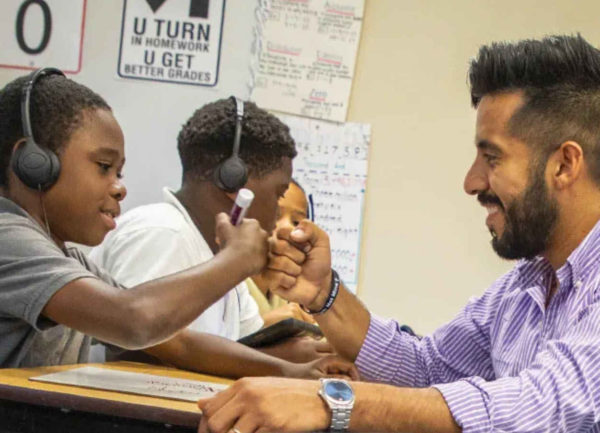Obviously, the past few years haven’t been easy for anybody. But the strain on school intervention specialists thrust into remote learning during group trauma has been especially great. Rami Tulp, assistant director of intervention for Katy ISD in Texas details some of the ways her district has catered to the needs of both students and faculty by providing supportive professional development, access to resources like Boardworks lessons, and more. Have a listen and scroll down for some edited excerpts.

We support intervention teachers who work with the students who are most at risk of dropping out—the students who struggle the most. And, you know, that cannot always be the most appealing job when you’re looking at teaching. So we really have been making sure that we support our intervention teachers with good resources as well as professional learning where you want to come back every year and continue to be an intervention teacher and support struggling kids…Coming out of the pandemic, some student struggles with learning have increased. And we need new strategies on how to support these kids. We need to keep building on the strategies that we already have, but also some new ideas, some new techniques. We’ve been doing a lot of campus visits, getting out to campuses and supporting teachers whenever they call, whenever they need an extra set of hands or an extra set of eyes with a class.
Some of the stories that some of our teachers shared when they were working with students virtually is that the home that the children were in wasn’t always somewhere they felt safe or comfortable. They didn’t want to unmute because in the background there might be screaming or something like that happening. We did have quite a few kids who were having to watch over their younger siblings. So there could be little screaming kids running around. We had some kids zooming from a bathtub because it was the quietest place in the house…Some kids were worried about how their hair looked because they haven’t been able to go out and get their hair fixed.
When you have all of that going on and you’re below grade level in reading or math, that just adds to it because you’re not feeling comfortable and you’re not feeling safe. So those are those things that virtually a teacher has to try and reach that kid through the screen and engage them and motivate them and make them feel safe and comfortable in a virtual setting. That’s a huge job that not everybody maybe understands. That’s more than just teaching a concept. That’s why having resources that are engaging already—prepared for a teacher can really benefit them because they have something to go off of while they’re also trying to make the kids feel safe and comfortable.
I know my big hope for our district is that we continue to inspire people to remember why we all became teachers. We are really inspiring the next generation. We’re the catalyst of what comes in our future and we have so many wonderful people in our district that are working so hard and supporting kids no matter who they are, where they’re from, and no matter what their needs are. The work we do with kids is so important and we need to keep supporting our teachers and keep having a positive outlook for what teaching is and what we’re doing.
- Meet the Winners—Dr. Kellie Wilks, Chief Technology Officer, of Ector County Independent School District, TX (ECISD) - April 12, 2024
- Meet the Winners—Prince William County Public Schools (PWCS) in Manassas, Virginia wins the 2024 Community Leadership Award for Digital Equity. - April 12, 2024
- #CoSN2024 Conversation – Tom Ryan Co-Founder K-12 Strategic Technology Advisor Group (NM) - April 10, 2024

